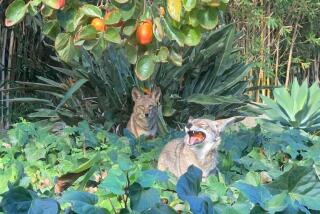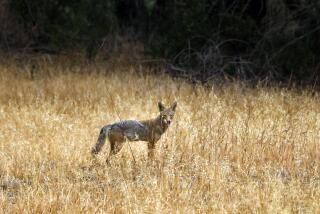Bones pulled from the La Brea Tar Pits show the perils of being a picky eater
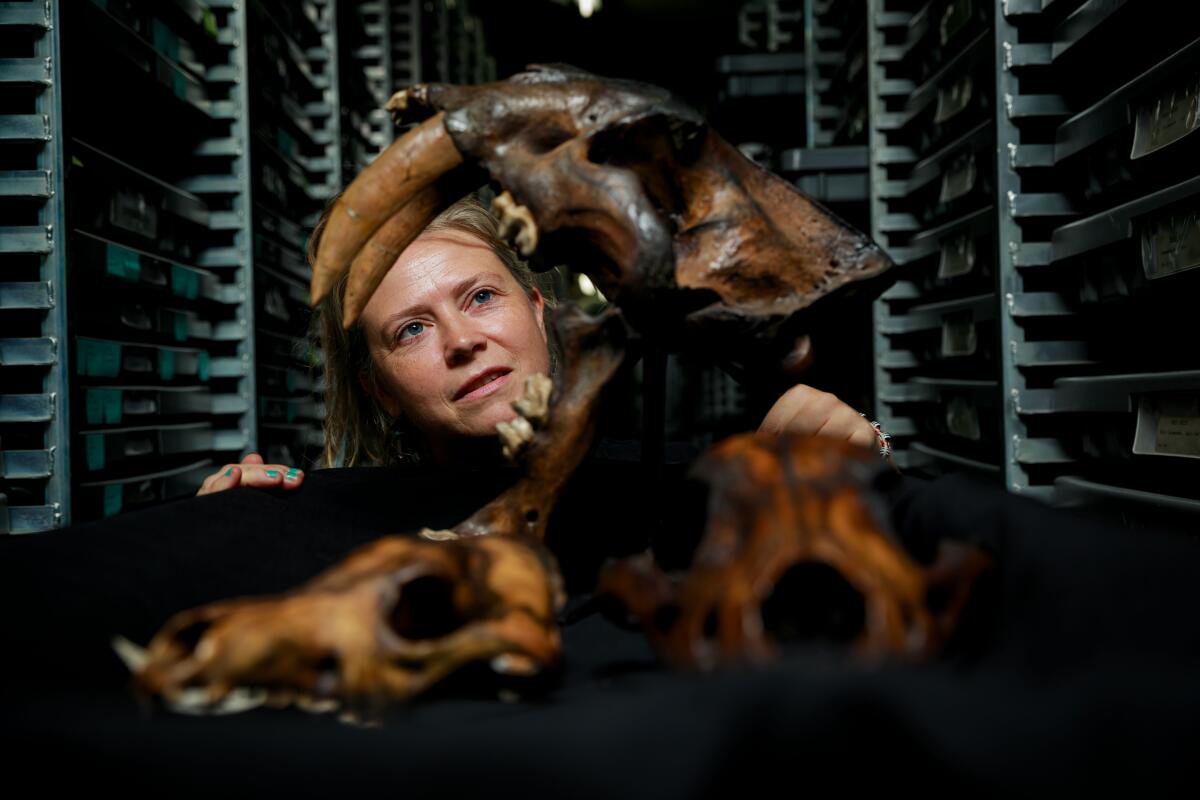
- Share via
Narrow rows of shallow gray bins tower to the ceiling. Resting inside are the jaw bones of saber-toothed cats and ancient coyotes that perished in the La Brea Tar Pits as many as 40,000 years ago.
“The original Angelenos,” said Aisling Farrell, a collections manager at Rancho La Brea. “Everything that we have lived and died here, or at least migrated through here and died here.”
Multiple species of saber-toothed cats went extinct about 10,000 years ago while coyotes survived — becoming the apex predators famous for terrorizing family pets. The reason why, argues new research based on the La Brea fossils, was the coyote’s superior ability to adapt to a changing world.
From about 15,000 to 10,000 years ago — the end of the Pleistocene epoch — a warming climate, the increasing encroachment of humans, or some combination of both led to a massive extinction of some of North America’s largest mammals.
By asking how the survivors responded to the loss of the larger carnivores, said Vanderbilt University paleontologist Larisa DeSantis, “we can begin to understand what the effects of past impacts of climate change and human effects were in these ecosystems and extract out important cautionary tales and lessons of relevance to conservation today.”
For example, she asked, “Did the diets of cougars and wolves and coyotes change in a substantial way once extinction of these other animals occurred? And in what way did that actually happen?”
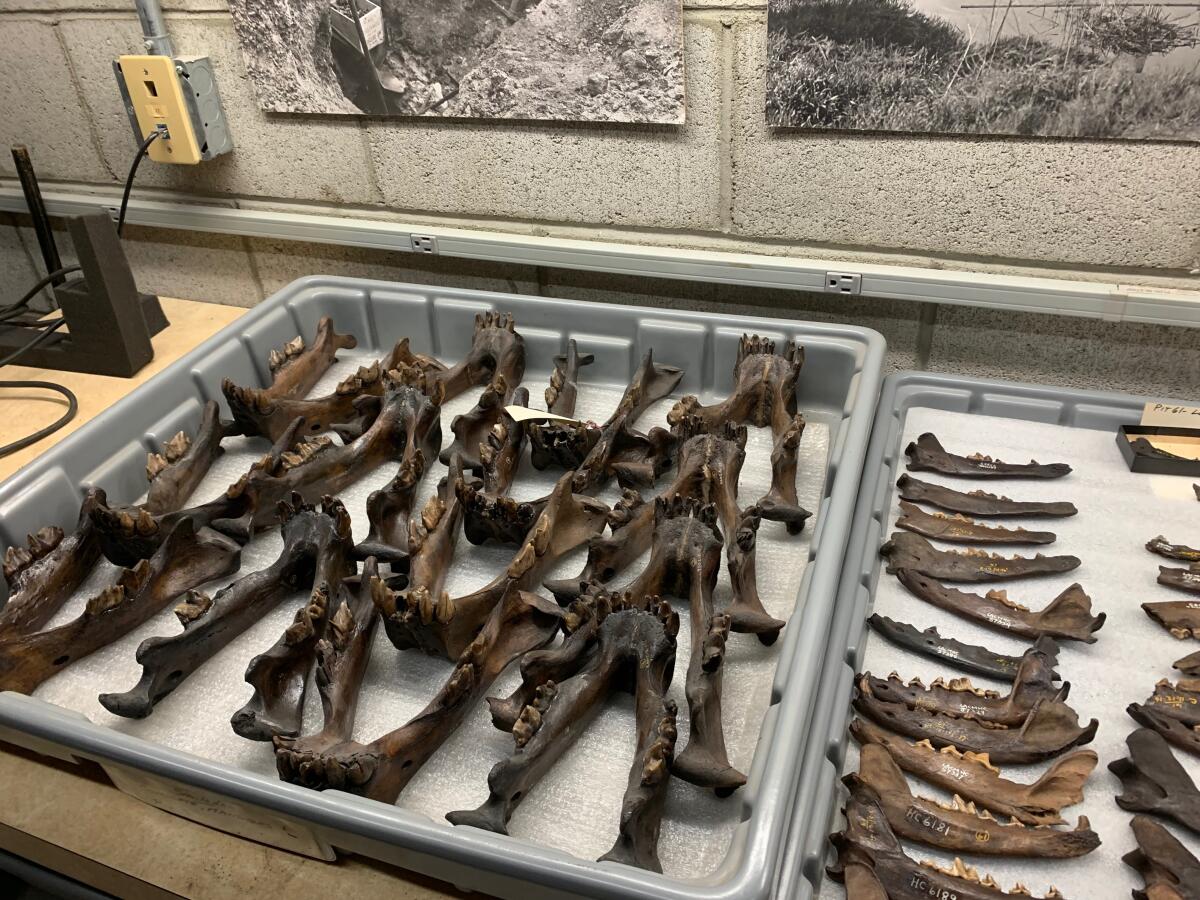
With over 3.5 million fossils representing more than 600 different species, the La Brea Tar Pits would likely hold the answers.
“If you’re going to study Pleistocene carnivores,” DeSantis said, “you go to La Brea.”
An ancient tar seep in the middle of modern-day Los Angeles, the La Brea Tar Pits trapped all sorts of animals over the past 50,000 years. It’s one of the most valuable sites for paleontologists studying both the causes and consequences of species extinctions.
Unwitting herbivores like American bison or giant ground sloths that accidentally wandered into the sticky trap would cry out for help, attracting the attention of predators — dire wolves, coyotes, saber-toothed cats, and the rare American lion — looking for an easy snack. Those predators would inevitably become stuck themselves.
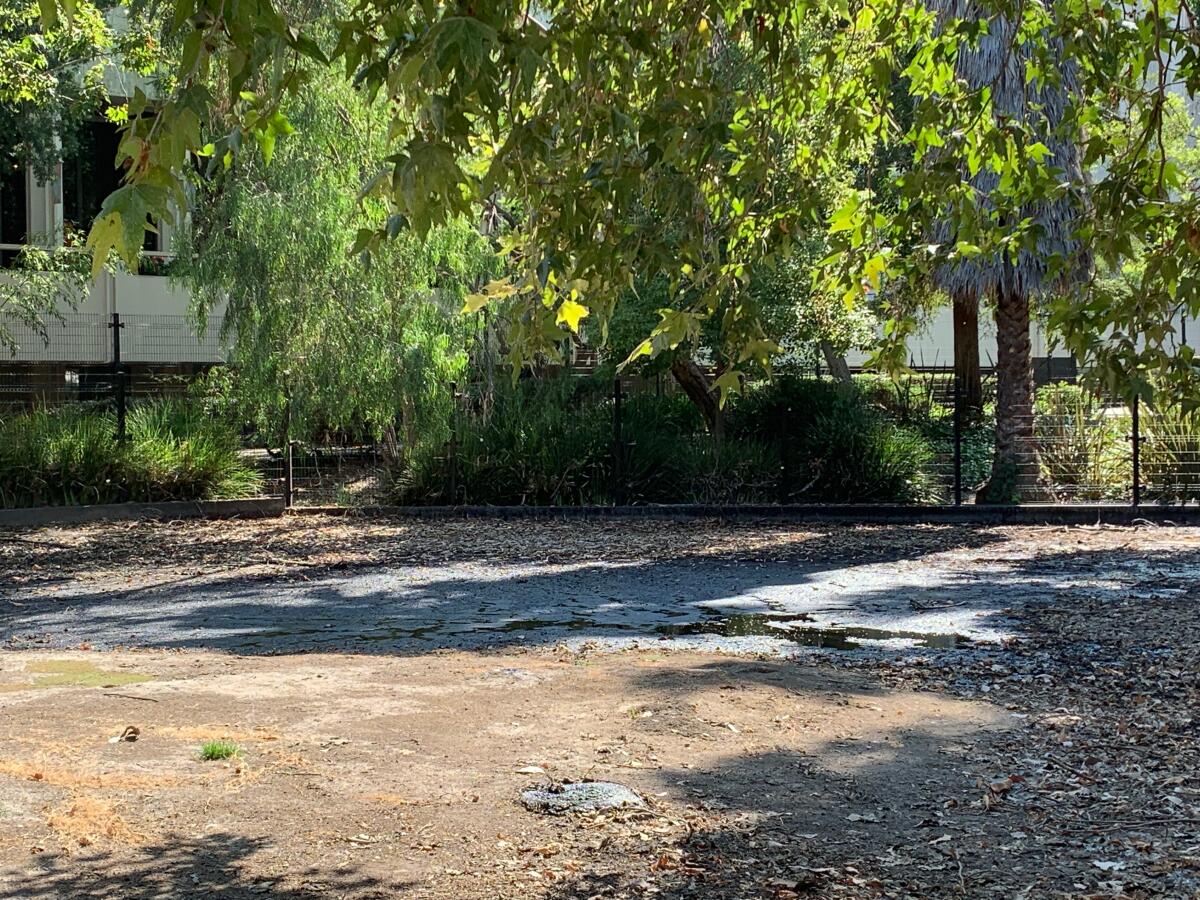
To understand how these predators adapted to the changing prey availability and the loss of other predators, DeSantis and her collaborators looked for clues hidden in their teeth: both the chemical composition of the enamel and the physical scrapes left on the surface.
“Everything you eat is incorporated into your tissues,” DeSantis said. “The great thing about teeth is that the signal is locked in at the time those teeth mineralize.”
Tooth enamel is laid down in adolescence, so it provides a snapshot of what an animal was eating during its young-adult life.
Drilling into the tooth, the researchers removed one to two milligrams of enamel — an amount comparable to about three grains of sugar.
Team members from Vanderbilt and New York State Museum in Albany then used mass spectrometry to measure the relative abundance of different isotopes of carbon in the enamel from ancient and modern-day carnivores.
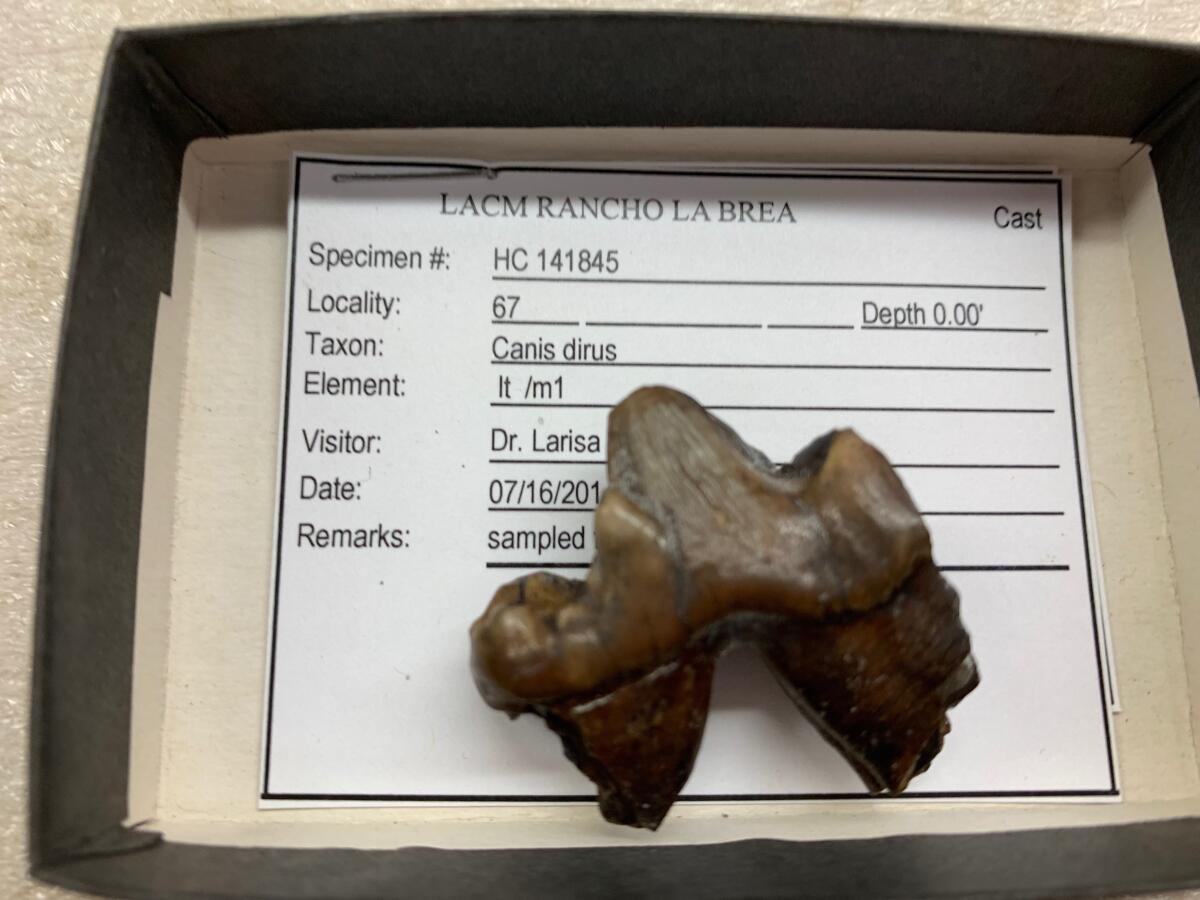
Teeth with a higher ratio of carbon-13 to carbon-12 indicate that their owner ate prey that lived in open grassy areas. Teeth with a lower ratio signal the carnivore hunted in more covered, forested areas.
The reason for this difference is that plants that grow in these environments do photosynthesis slightly differently, leading to distinctive ratios of carbon-13 and carbon-12. Herbivores that eat the plants incorporate their ratio of carbon isotopes into their bodies, as do the carnivores further up the food chain.
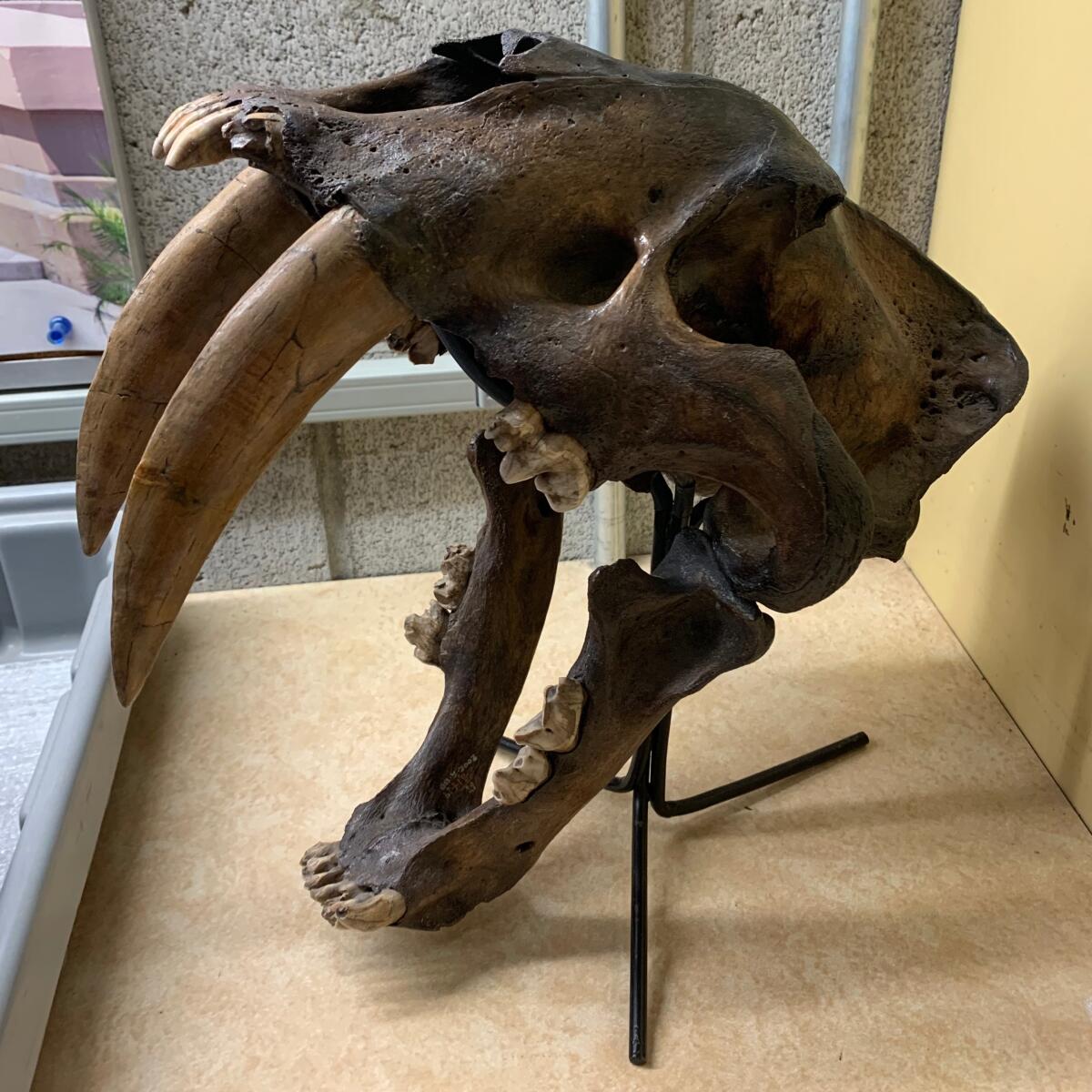
According to the carbon isotope ratios, saber-toothed cats preferred to hunt in sheltered groves.
“It makes sense then that an ambush predator would be catching more prey in a more covered area than in an open plain,” said Julie Meachen, a paleontologist from Des Moines University who was not involved in the research.
Ancient coyotes, on the other hand, hunted in open areas. But after larger predators died out, coyotes began catching prey in more forested areas, their tooth enamel revealed.
This shift was even clearer when the researchers looked at the physical wear and tear on the animals’ teeth.
Using a technique called dental microwear texture analysis, “we scan that surface in three dimensions, much like a topographic map,” DeSantis said.
Peter Ungar, a paleoanthropologist at the University of Arkansas and the inventor of dental microwear texture analysis, explained that foods leave characteristic marks on the teeth.
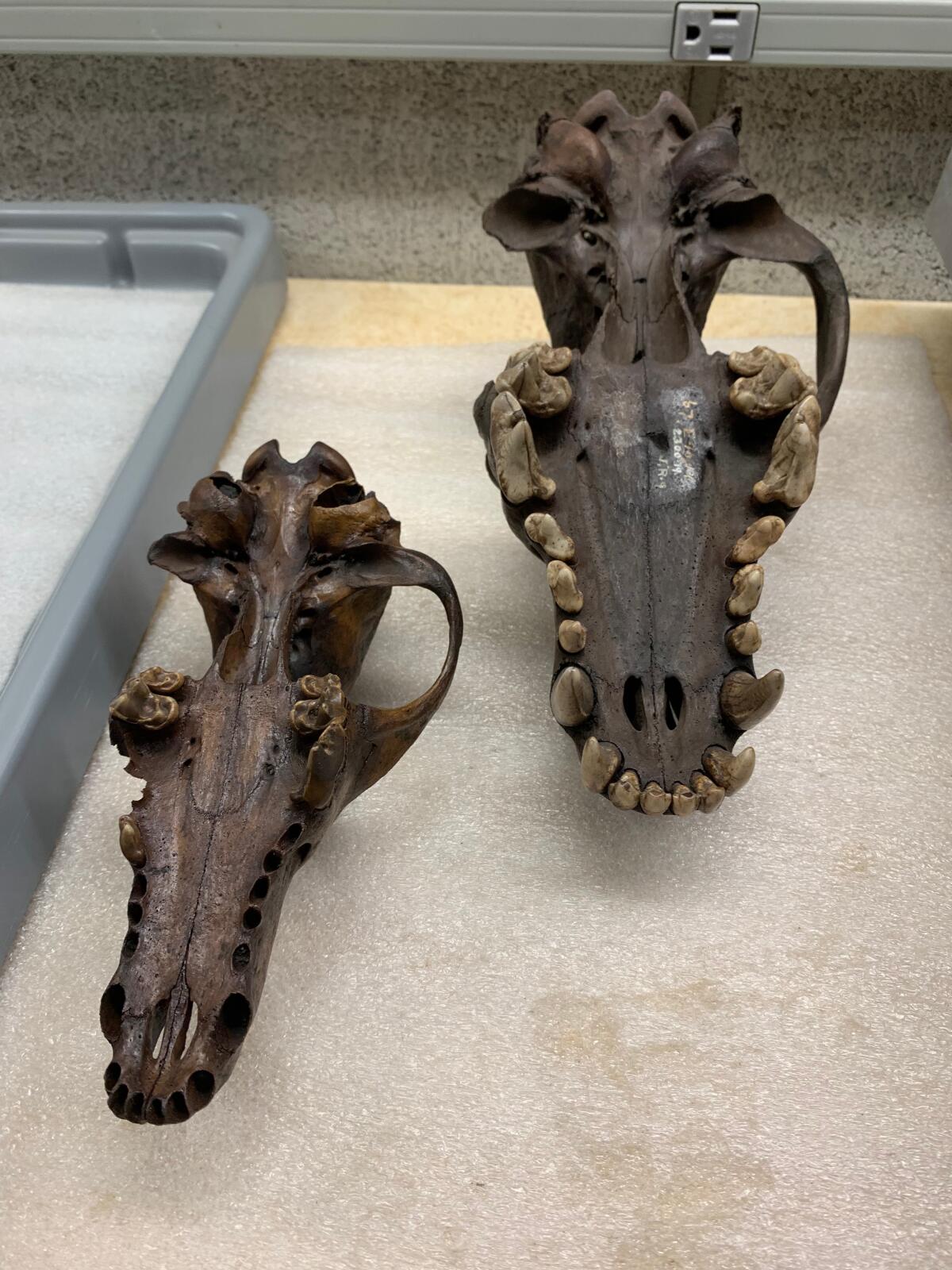
If the predator is eating “the organs and the meat, but not the bone, then they should have microwear dominated by fine parallel scratches,” he said. But if they are eating a lot of bone, they’ll have “a lot of pits on their teeth.”
The researchers found that before the Pleistocene extinction, both saber-toothed cats and coyotes were chowing down on the fleshy, meaty parts of their prey.
But teeth from coyotes found in the tar pits after the Pleistocene extinction were much more pitted and complex, indicating that they had shifted to a more scavenging behavior — a characteristic of coyotes alive today. (Sure enough, the teeth of modern-day coyotes were also quite pitted.)
In other words, DeSantis said, the animals “were able to adapt.”
The findings were published this month in the journal Current Biology.
“It’s a really interesting study,” said Ungar, who praised the team for using multiple types of evidence to make their case. “I think that’s the future of this kind of work.”
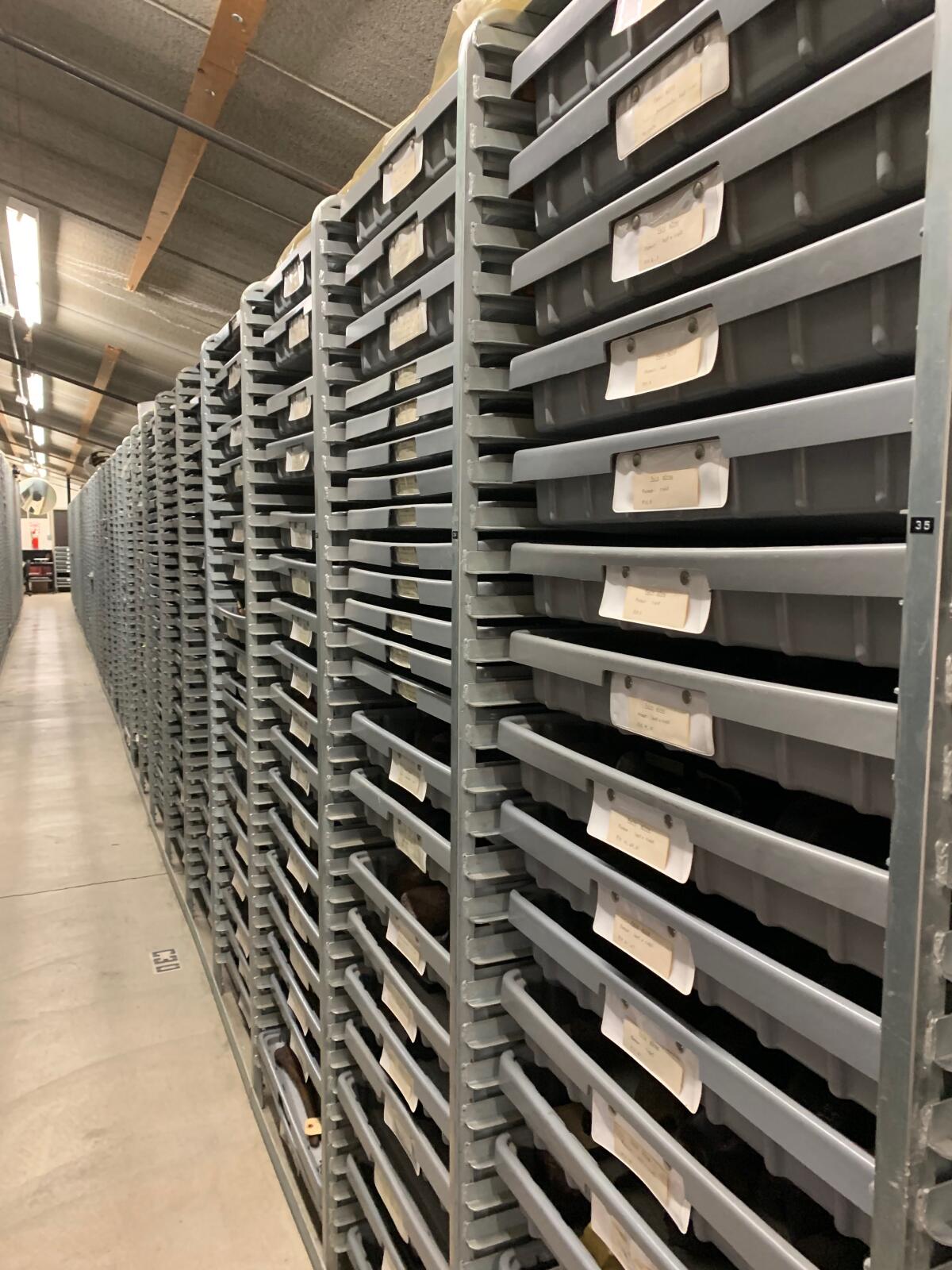
It’s not yet clear why the saber-toothed cats and dire wolves couldn’t adjust to the changing ecosystem as well as the coyotes did. Perhaps those larger predators had become too specialized, DeSantis said.
“If you are smaller, if you are a generalist, if you are opportunistic, you have a better chance at surviving,” she said.
Understanding the coyotes’ response to the disappearance of large predators will guide researchers as they think about how other species might react to future extinction events.
When building models for how species could change in response to climate change and human population growth, “you have to make the assumption that what the animal does today, an animal will do tomorrow,” De Santis said. “But as we’ve learned from the coyotes, that’s not always the case.”

